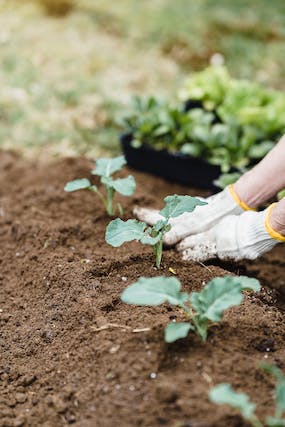
Cultivating the Future: A Guide to Crop Production Planting
Planting the seeds of life – it’s a simple act, yet it holds immense power. It’s the foundation of crop production, the starting point for a journey that nourishes communities and sustains our planet. But planting effectively isn’t just about poking a seed in the ground. It’s a delicate dance between science, timing, and care, a symphony of factors that orchestrate a bountiful harvest.
Setting the Stage: Preparing the Seedbed
Before the seeds take their first tentative steps, the stage needs to be set. A well-prepared seedbed is the cradle that nurtures their initial growth. This involves:
- Tilling the soil: Loosening the soil allows for better root penetration, aeration, and water drainage.
- Testing and adjusting pH: Different crops thrive in specific pH ranges, so testing and amending the soil as needed is crucial.
- Managing nutrients: Applying the right fertilizers ensures the seeds have the essential elements they need to germinate and flourish.
- Removing weeds and debris: These compete for resources and can harbor pests and diseases, hindering seedling development.
Sowing the Seeds: Precision and Timing
With the stage prepared, it’s time for the stars of the show – the seeds! Sowing them correctly is key to success:
- Planting depth: Different seeds have different depth requirements. Following recommended depths ensures optimal access to moisture and light.
- Spacing: Proper spacing allows for adequate air circulation, prevents overcrowding, and optimizes resource utilization.
- Seed quality: Choose high-quality, disease-free seeds from reliable sources for the best results.
- Timing is everything: Planting at the right time of year is crucial for optimal germination and growth. Consider factors like soil temperature, frost dates, and seasonal variations.
Nurturing the Seedlings: Tender Care and Protection
Once the seeds sprout, their tender shoots reach for the sun. This vulnerable stage requires gentle care:
- Watering: Consistent and adequate moisture is essential for seedling establishment. However, overwatering can lead to root rot and fungal diseases.
- Thinning: If seedlings are too crowded, they compete for resources and become spindly. Thinning ensures healthy, vigorous growth.
- Pest and disease control: Early intervention with organic or natural methods can prevent outbreaks that damage young plants.
- Weed management: Weeds compete for resources and light, hindering seedling growth. Regular hand-weeding or mulching can help control them.
From Seedling to Harvest: A Journey of Growth and Care
Planting is just the first step in a long and rewarding journey. With dedication, knowledge, and a little bit of magic, those tiny seeds will transform into bountiful crops, nourishing not only our bodies but also our spirits. Remember, every successful harvest begins with a well-planned and executed planting. So, get your hands dirty, embrace the rhythm of the seasons, and watch the seeds you sow blossom into a future filled with abundance.